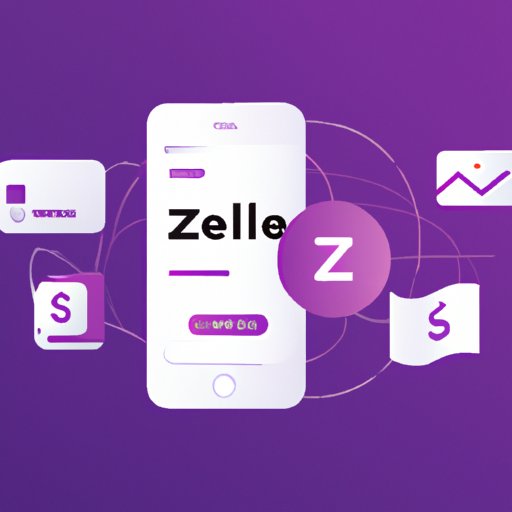Introduction
Zelle is a popular digital payment service that allows users to quickly and easily send money to friends, family, and businesses. It is available through many major banks and credit unions in the United States, making it an attractive option for those looking to send large sums of money. But how much money can you actually send with Zelle? In this article, we’ll explore the maximum transaction limits, tips for sending the maximum amount, banks and credit unions that use Zelle, pros and cons of using Zelle for large transactions, and a comparison of Zelle to other popular payment services.
Tips for Sending the Maximum Amount of Money with Zelle
The first step to sending the maximum amount of money with Zelle is to maximize your transaction limit. Many banks and credit unions have daily limits on the amount of money that can be sent or received. To increase your limit, contact your bank or credit union and ask them to raise it. Some may require additional information such as proof of income before increasing your limit.
It’s also important to make sure that your transactions are secure. Zelle uses encryption technology to protect your data, but it’s still important to be careful when sending money. Make sure you only use Zelle with people you know and trust, and never send money to someone you don’t know. You should also avoid clicking on any suspicious links or providing personal information to unknown parties.

Banks and Credit Unions That Use Zelle and Their Maximum Transaction Limits
Many banks and credit unions offer Zelle as a way to send money. Some of the most popular ones include Bank of America, Wells Fargo, Chase, Capital One, Citi, and USAA. Each one has its own maximum transaction limit, so it’s important to check with your bank or credit union to find out what the limit is.
For example, Bank of America has a maximum transaction limit of $2,500 per day. Wells Fargo has a limit of $2,000 per day, while Chase has a limit of $2,000 per transfer and $4,000 per day. Capital One has a limit of $1,000 per day, Citi has a limit of $2,000 per day, and USAA has a limit of $2,500 per day.

Pros and Cons of Using Zelle for Large Transactions
Using Zelle for large transactions has both benefits and drawbacks. Chief among the advantages are speed and convenience. Zelle transfers are almost instantaneous, meaning you can send and receive money quickly and easily. It also doesn’t require you to enter any personal information, making it a secure way to send money.
However, there are some drawbacks to using Zelle for large transactions. For one, the maximum transaction limit may be too low for some users. Additionally, some banks and credit unions may charge a fee for using Zelle. Lastly, Zelle is only available in the United States, so if you need to send money overseas, you’ll need to look for another payment service.

Comparing Zelle to Other Payment Services for Sending Large Sums of Money
When it comes to sending large sums of money, Zelle isn’t the only option. There are several other popular payment services that may be better suited for your needs. PayPal is one of the most popular payment services, and it has a maximum transaction limit of $10,000 per transaction. Venmo is another popular option, with a maximum transaction limit of $4,999.99 per week.
Each payment service has its own set of fees, features, and ease of use. PayPal has a 2.9% fee for each transaction, while Venmo has a 3% fee. PayPal also offers buyer protection and dispute resolution, while Venmo offers instant transfers and the ability to split payments. Ultimately, the best payment service for you will depend on your specific needs.
Conclusion
Zelle is a great option for those looking to send large sums of money. However, the maximum transaction limit may be too low for some users. It’s important to check with your bank or credit union to find out what the limit is, and to make sure your transactions are secure. Additionally, there are several other payment services that may be better suited for your needs, so it’s important to compare fees, features, and ease of use before deciding which one to use.
(Note: Is this article not meeting your expectations? Do you have knowledge or insights to share? Unlock new opportunities and expand your reach by joining our authors team. Click Registration to join us and share your expertise with our readers.)
